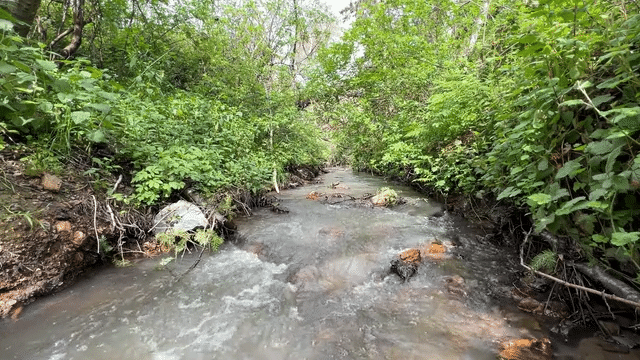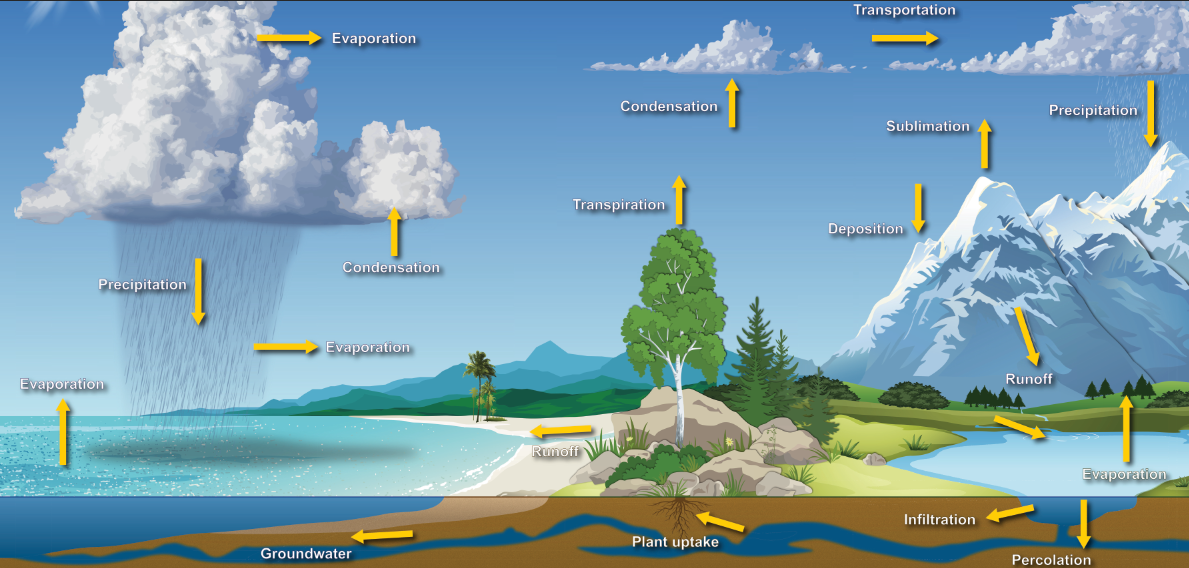Have you ever walked from a field or pasture into a riparian corridor- that cool wet area surrounding a creek or river?
The Other Thing that Water Does

03/27/2024
By: Dakota Glueck
 Have you ever walked from a field or pasture into a riparian corridor- that cool wet area surrounding a creek or river? Did you feel the temperature drop almost immediately? Sure there is shade under trees and brush, but that doesn’t account for all that drop in temperature, the water does. Besides allowing plants to grow and giving animals something to drink, that water is literally cooling the environment.
Have you ever walked from a field or pasture into a riparian corridor- that cool wet area surrounding a creek or river? Did you feel the temperature drop almost immediately? Sure there is shade under trees and brush, but that doesn’t account for all that drop in temperature, the water does. Besides allowing plants to grow and giving animals something to drink, that water is literally cooling the environment.
This goes back to something you probably learned in middle school and a little basic physics. When light reaches the earth’s surface it interacts with objects which absorb some of that energy then radiate that energy as heat. That’s how blacktop gets hot enough to feel through your sneakers on a sunny day. But when that solar energy interacts with a well hydrated environment (versus that blacktop), something else happens. During both photosynthesis and evaporation water absorbs energy and instead of putting it back out as heat it transforms into water vapor and goes from a liquid to gas phase. That water vapor whisks that heat away from the earth’s surface, holding it until it gets into the atmosphere and condenses into rain. Ancient peoples knew about this amazing cooling property of water and placed fountains and large pools in city centers to help cool them down.
Detailed graphic image of the water cycle with the ocean on the left, land in the middle, and a river, lake, and mountain on the right. The graphic shows where evaporation, condensation, and precipitation may take place and also shows transportation, sublimation, deposition, runoff, infiltration, percolation, groundwater, plant uptake, and transpiration. (Image credit: Dennis Cain/NWS)
This is part of the virtuous cycle between water and soil carbon in regenerative agriculture. By changing our farming and ranching practices to protect and enhance soil carbon we are fostering greater water holding capacity. The additional water in the soil is transpired by plants, helping to cool the landscape, protecting our livestock from heat stress and keeping our grass green and growing when drought or heat would otherwise shut it down. Over time, this additional growth allows us to put extra carbon in the soil and continue the cycle.
We can see this virtuous cycle on our individual farms and ranches, and on a landscape and even continental scale too. Climate disruption is causing desertification across the world, but even more so the history of agriculture over the last 10,000 years has caused an expansion of deserts where fragile grasslands and savannas once stood. Part of what characterizes deserts is not only the total rainfall, but that rain comes all at once and, instead of penetrating the soil, vast quantities of water flash flood off the land. Using regenerative ranching practices we can reverse desertification and bring back grasslands and savanna by infiltrating the rain and revegetating the land.
Not only will this help keep the land cool and green, but crucially the cities and towns in these regions will stay livable. Heat waves and droughts are projected to be major drivers of climate displacement. Regenerative agriculture holds the promise of keeping these regions livable and providing sustainable livelihoods in the coming century.
